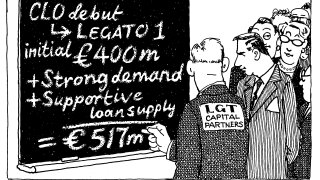Latest news
Latest news
Tight loan market makes it tricky to ramp CLO portfolios
Triple-As land 8bp back of recent tights as manager keeps the equity
Demand is expected to come from Europe, LATAM and Asia
More articles
More articles
-
The US CLO market is gaining positive traction in the first quarter of the year, with strong demand from investors, and spreads continuing to tighten, despite the absence of the Japanese banks, traditional anchor buyers of the senior tranches.
-
A boom in CLO refinancing and reset volumes, alongside intense new issue activity, is leading to worries about whether banks, rating agencies, law firms and other deal parties have the capacity to cope.
-
CVC Credit has pushed triple-A spreads to tights not seen since March 2018 with its new CLO issue, Apidos XXXV.
-
Allen & Overy has hired White & Case veteran Jake Mincemoyer as head of its US leveraged finance practice, based in New York.
-
AGL Credit Management and Palmer Square Capital, among the most active managers in 2020, have returned to the market with new issue deal with five year-reinvestment periods, as tightening pricing lets managers term out their structures. But shorter deals continue to be attractive, especially for mezz buyers.
-
Eagle Point Credit Management, a specialist asset manager focused on investing in CLO securities and portfolio debt securities, has hired Seth Weinstein as director of business development, a newly created position.
-
Neuberger Berman has re-entered the European CLO market for the first time since the financial crisis, with a deal including a new feature which measures how well its portfolio matches UN sustainable development goals.
-
CLO managers bringing new deals need lower rated, higher yielding loans to come to the primary market, after the European market saw a surfeit of better quality supply in the first months of the year.
-
Tough market conditions last year meant many CLO managers in the US issued fewer deals than usual, and some didn’t print at all. But a strong opening to this year has encouraged some, if not all, to return. Meanwhile, a new type of structure may give others the incentive to make a comeback, writes Paola Aurisicchio.
















